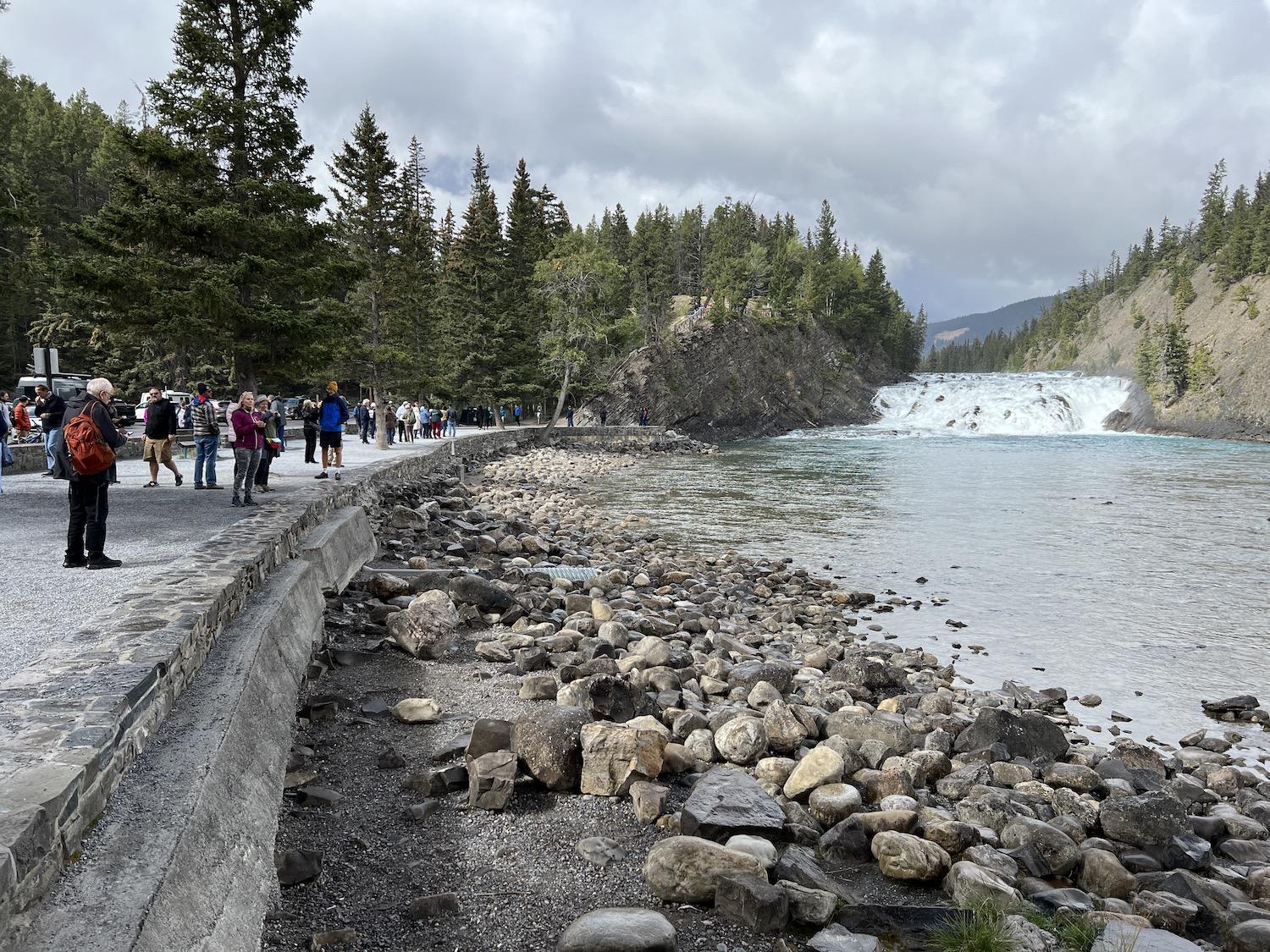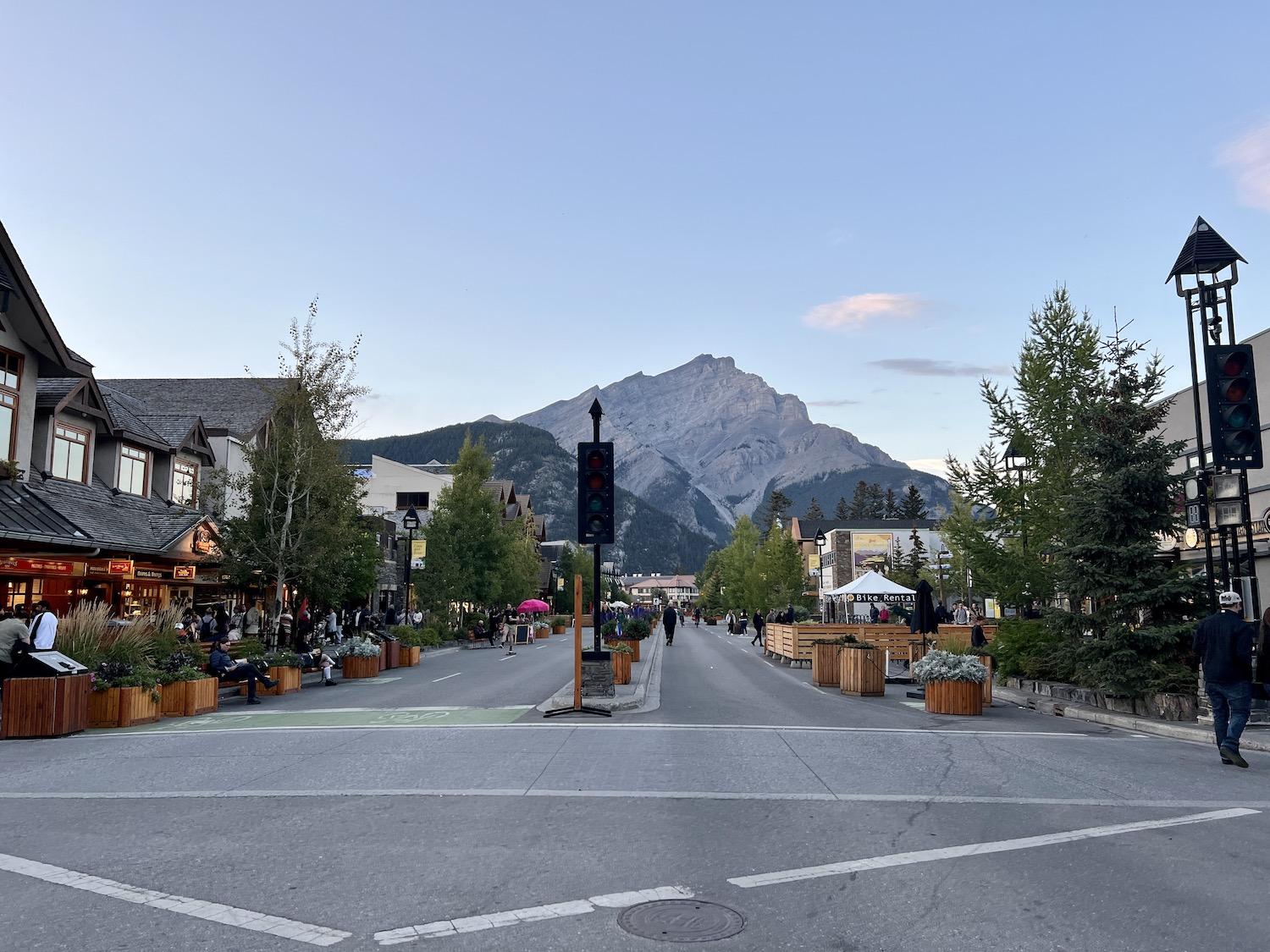
A crowd admires the Bow River in Banff National Park/Jennifer Bain
The public has until Feb. 2 to weigh in on the Expert Advisory Panel on Moving People Sustainably in the Banff Bow Valley final report about Banff National Park.
Indigenous communities and individuals, stakeholders and other members of the public can review the report at LetsTalkMountainParks.ca and provide feedback to Parks Canada. The federal agency is also working with Indigenous partners to review the report to determine how to incorporate Indigenous perspectives into how it moves forward.
The report identifies eight key strategies to move toward a more sustainable future. The advice and recommendations, along with the feedback from this engagement process, will be key considerations for Parks Canada as it implements the 2022 management plan for the Alberta park.
More than four-million people visit Banff every year. Planning for the sustainable movement of people to, from and within Banff must be integrated with planning for other strategies in the park management plan related to reducing impacts of climate change on park resources, and true-to-place visitor experiences, with ecological integrity as a cornerstone.
“Many of the suggested solutions are bold and may take some time to implement, others are fundamental to better understanding visitor behaviour and expectations,” advisory panel chair Bill Fisher said in a news release. “We hope our report can serve as a guide for how to move people sustainably in the busiest national park in Canada and perhaps become a model for other protected areas to consider.”

For a moment on this Sunday afternoon in September, downtown Banff wasn't overrun with visitors/Jennifer Bain
Established in 1885, Banff is an internationally recognized symbol of Canada, an integral part of the Canadian Rocky Mountain Parks UNESCO World Heritage Site, and a focal point for western Canada’s tourism industry.
But over the last decade, vehicle traffic has increased 30 percent overall, with some specific locations (such as the road leading to Lake Louise and Moraine Lake) showing increases of up to 70 percent. About 8.3 million vehicles travel into the park each year, with roughly half of these carrying park visitors and the other half traveling through to other destinations.
In 2021, a panel was established to advise Parks Canada on the development of a long-term framework for the sustainable movement of visitors in the Bow Valley in Banff. Panel members had expertise in areas such as protected area management, transportation innovation, technology and tourism. They looked at emerging solutions and examples of best practices from around the world and considered how people arrive at, move about, and experience the park.
"Moving people sustainably" is one of nine key strategies highlighted in the approved Banff management plan released in August. That plan identifies a goal of developing a comprehensive people-movement plan for the park by 2024.
“Visitors come to the park for many reasons — sightseeing, hiking, skiing, camping or enjoying a picnic with family and friends. Their ideal experience does not include being caught in traffic jams and long searches for parking,” the report concluded. “Simply expanding parking lots may provide relief for a few years but it is not sustainable, prudent over the long term, nor practical in some locations. Further, in a national park loved by millions of visitors, and cherished by Canadians, is it appropriate to have future generations lament `they paved paradise and put up a parking lot’ (lyrics from Big Yellow Taxi, Joni Mitchell)?”
The 60-day period for public input began Dec. 5.


